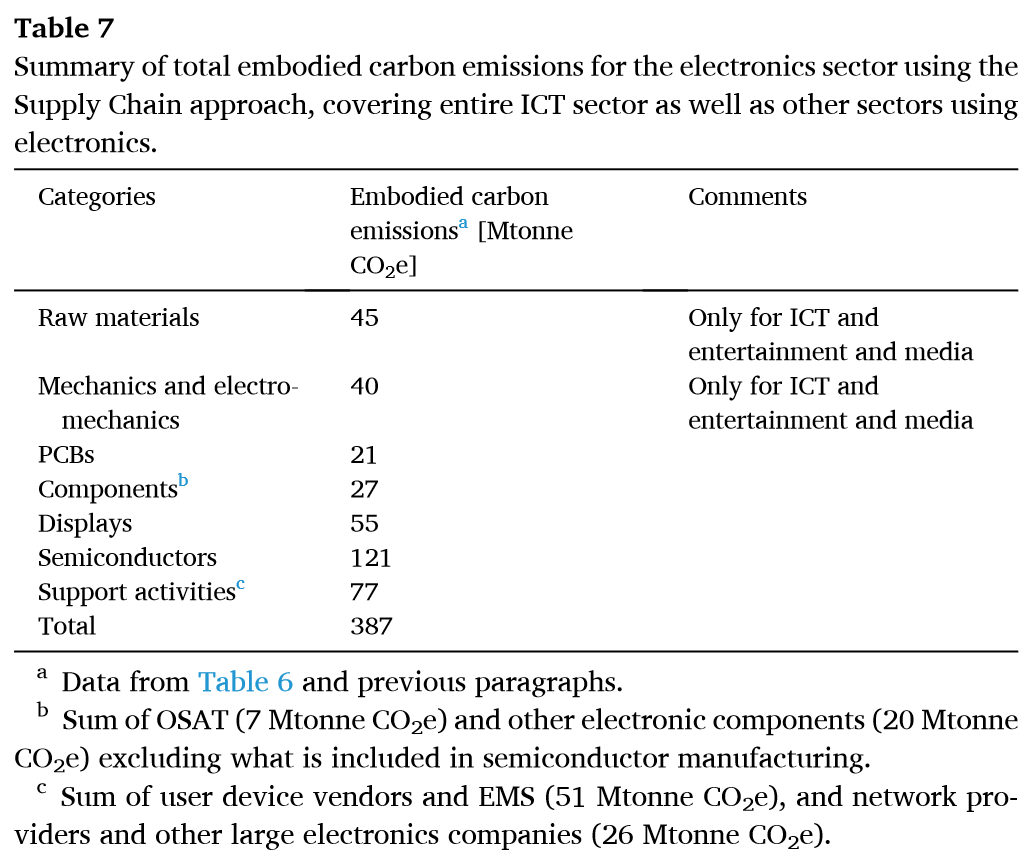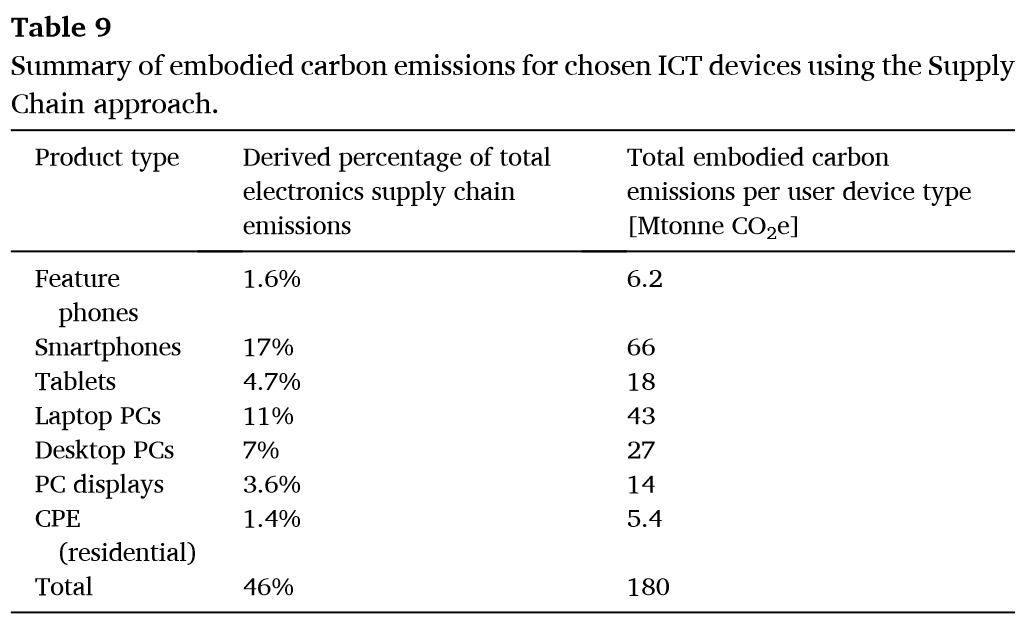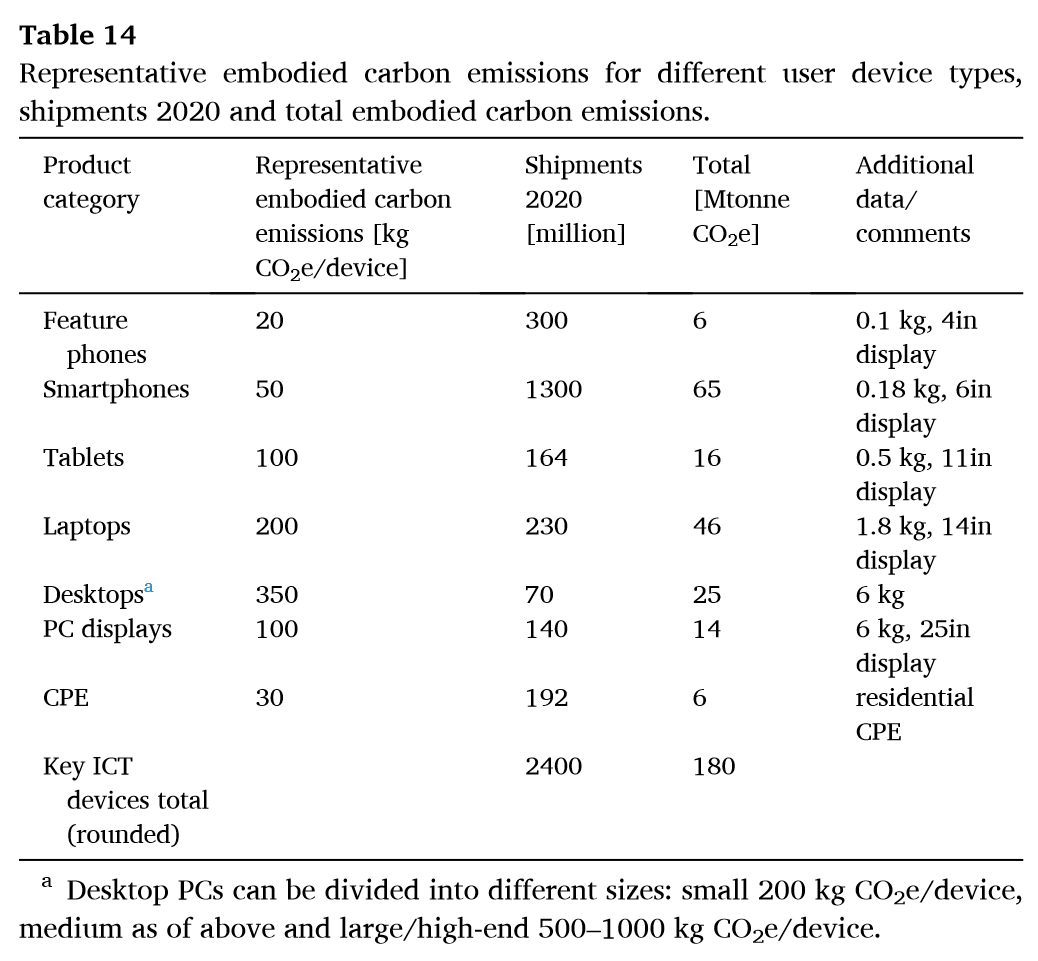Assessing embodied carbon emissions of communication user devices by combining approaches
Status:: 🟩
Links:: Embodied carbon of ICT devices
Metadata
Authors:: Lövehagen, N.; Malmodin, J.; Bergmark, P.; Matinfar, S.
Title:: Assessing embodied carbon emissions of communication user devices by combining approaches
Publication Title:: "Renewable and Sustainable Energy Reviews"
Date:: 2023
URL:: https://www.sciencedirect.com/science/article/pii/S1364032123002794
DOI:: 10.1016/j.rser.2023.113422
Bibliography
Lövehagen, N., Malmodin, J., Bergmark, P., & Matinfar, S. (2023). Assessing embodied carbon emissions of communication user devices by combining approaches. Renewable and Sustainable Energy Reviews, 183, 113422. https://doi.org/10.1016/j.rser.2023.113422
Zotero
Type:: #zotero/journalArticle
Zotero::
Keywords:: [ICT, Carbon emissions, Carbon footprint, Electricity consumption, Embodied emissions, GHG emissions, ICT sector]
Relations
Abstract
The use of information and communication technologies are increasing in society. Carbon emissions can be found throughout the entire life cycle of access networks, data centers and communication user devices. The focus of this study is the embodied carbon emissions of user devices associated with accessing networks, hence tablets, smartphones and feature phones, laptop and desktop PCs, PC displays and customer premises equipment (CPEs). The purpose is to investigate the embodied carbon emissions by applying different approaches: i) the commonly used approach where estimated product carbon emissions are scaled up by shipments, ii) allocation of the electronic sector companies’ reported data combined with materials data for the products, and iii) the upstream carbon emissions reported by user device vendors (final manufacturers). Despite its sensitivity to allocation the second approach is considered to give the most reasonable overall result of about 180 million tonnes carbon dioxide equivalents (CO2e) related to chosen user device types and shipments in 2020. Underreporting of scope 3 in the data sources of the vendors, and sensitivity to specific product data sets with very high display values are two major concerns of the other approaches. Representative embodied emissions for user devices are derived for 2020: 50 kg CO2e for a smartphone, 20 kg CO2e for a feature phone, 100 kg CO2e for a tablet, 200 kg CO2e for a laptop, 350 kg CO2e for a desktop PC, 100 kg CO2e for a PC display and 30 kg CO2e for a CPE.
Notes & Annotations
📑 Annotations (imported on 2023-08-01#14:54:44)
Representative embodied emissions for user devices are derived for 2020: 50 kg CO2e for a smartphone, 20 kg CO2e for a feature phone, 100 kg CO2e for a tablet, 200 kg CO2e for a laptop, 350 kg CO2e for a desktop PC, 100 kg CO2e for a PC display and 30 kg CO2e for a CPE.
The focus of this study was the embodied carbon emissions of endu-ser goods in line with [8], including general-purpose end-user goods associated with accessing cellular networks, hence laptops, tablets, smartphones and simpler mobile phones (hereinafter feature phones), and end-user goods rather associated with other networks such as desktop PCs, PC displays (hence monitors or screens) and customer premises equipment (CPE, hence home routers, modems, etc.). These are hereinafter collectively referred to as user devices.

Table description:
Summary of total embodied carbon emissions for the electronics sector using the Supply Chain approach, covering entire ICT sector as well as other sectors using electronics.

Table description:
Summary of embodied carbon emissions for chosen ICT devices using the Supply Chain approach.
The global embodied emissions of selected ICT user devices for 2020 were estimated to 180 Mtonne CO2e (excluding use and end of life), by combining the Supply Chain approach gathering data for the entire electronics sector and allocating it to user devices, with the LCA/PCF approach scaling product level data with annual sales/shipments.

Table description:
Representative embodied carbon emissions for different user device types, shipments 2020 and total embodied carbon emissions.